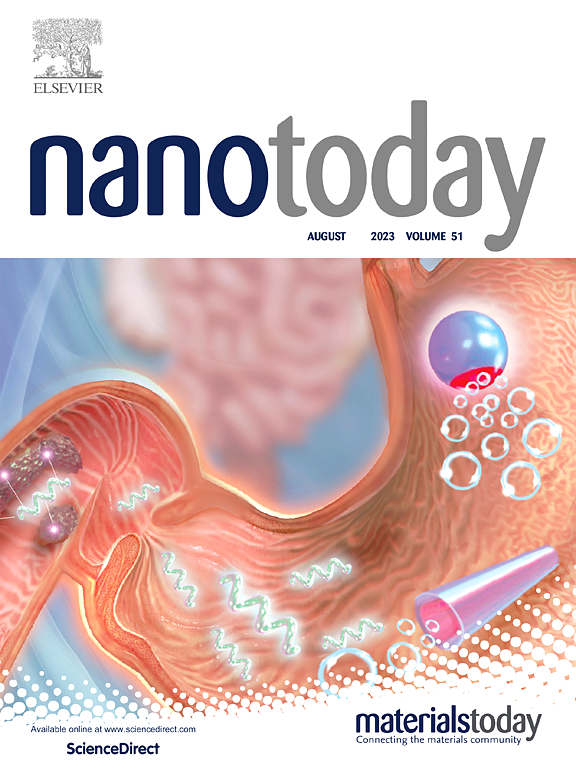Aerogels as next-generation electrocatalysts for water electrolysis and beyond
IF 10.9
1区 材料科学
Q1 CHEMISTRY, MULTIDISCIPLINARY
引用次数: 0
Abstract
The rising energy demand and depletion of conventional fuels have led to intensified interest in water-splitting as a sustainable clean energy resolution. Accordingly, developing efficient catalytic materials have become vital for advancing key electrochemical processes, including the oxygen evolution reaction (OER), hydrogen evolution reaction (HER), and overall water electrolysis, which are essential for energy conversion technologies (e.g., metal-air batteries, fuel cells, and water-splitting devices). Given the need for innovative solutions in this domain, aerogel (AG)-based materials have emerged as leading candidates, distinguished by their highly porous microstructure, tunable properties, and diverse synthesis approaches. The goal of this review is to offer a thorough examination of AG catalysts, elucidating why they are pivotal for addressing current challenges in electrocatalysis. We explore their synthesis techniques, structural characterization methods, and roles in enhancing electrochemical kinetics and electrode activity. The discussion extends to their ability to lower overpotentials, boost catalytic performance, and prolong cycle life, making them indispensable for sustainable energy applications. Furthermore, the incorporation of Density Functional Theory (DFT) as a computational tool provides deeper insights into molecular pathways and reaction mechanisms in water-splitting, strengthening the connection between experimental and theoretical studies. Finally, this review identifies future directions and addresses the challenges in developing cost-effective, high-efficiency AG-based catalysts, underscoring their potential to transform clean energy production.
气凝胶作为水电解及其他领域的下一代电催化剂
能源需求的增加和传统燃料的枯竭使人们更加关注将水分解作为一种可持续的清洁能源解决方案。因此,开发高效的催化材料对于推进关键的电化学过程至关重要,包括析氧反应(OER),析氢反应(HER)和整体水电解,这对于能量转换技术(例如金属-空气电池,燃料电池和水分解装置)至关重要。考虑到该领域对创新解决方案的需求,气凝胶(AG)基材料已成为领先的候选材料,其特点是其高度多孔的微观结构、可调的性能和多种合成方法。本综述的目的是对AG催化剂进行全面的研究,阐明为什么它们对解决当前电催化领域的挑战至关重要。我们探讨了它们的合成技术、结构表征方法以及在提高电化学动力学和电极活性方面的作用。讨论扩展到它们降低过电位、提高催化性能和延长循环寿命的能力,使它们成为可持续能源应用中不可或缺的材料。此外,结合密度泛函理论(DFT)作为计算工具,可以更深入地了解水分解的分子途径和反应机制,加强实验和理论研究之间的联系。最后,本综述确定了未来的发展方向,并解决了开发成本效益高、效率高的ag基催化剂的挑战,强调了它们改变清洁能源生产的潜力。
本文章由计算机程序翻译,如有差异,请以英文原文为准。
求助全文
约1分钟内获得全文
求助全文
来源期刊

Nano Today
工程技术-材料科学:综合
CiteScore
21.50
自引率
3.40%
发文量
305
审稿时长
40 days
期刊介绍:
Nano Today is a journal dedicated to publishing influential and innovative work in the field of nanoscience and technology. It covers a wide range of subject areas including biomaterials, materials chemistry, materials science, chemistry, bioengineering, biochemistry, genetics and molecular biology, engineering, and nanotechnology. The journal considers articles that inform readers about the latest research, breakthroughs, and topical issues in these fields. It provides comprehensive coverage through a mixture of peer-reviewed articles, research news, and information on key developments. Nano Today is abstracted and indexed in Science Citation Index, Ei Compendex, Embase, Scopus, and INSPEC.
 求助内容:
求助内容: 应助结果提醒方式:
应助结果提醒方式:


